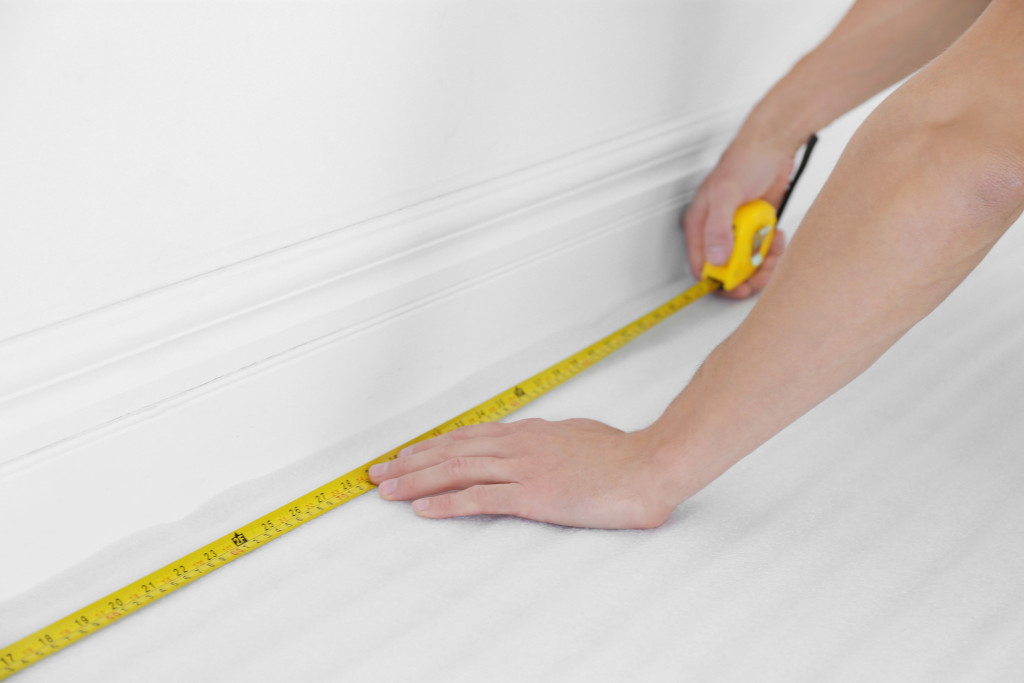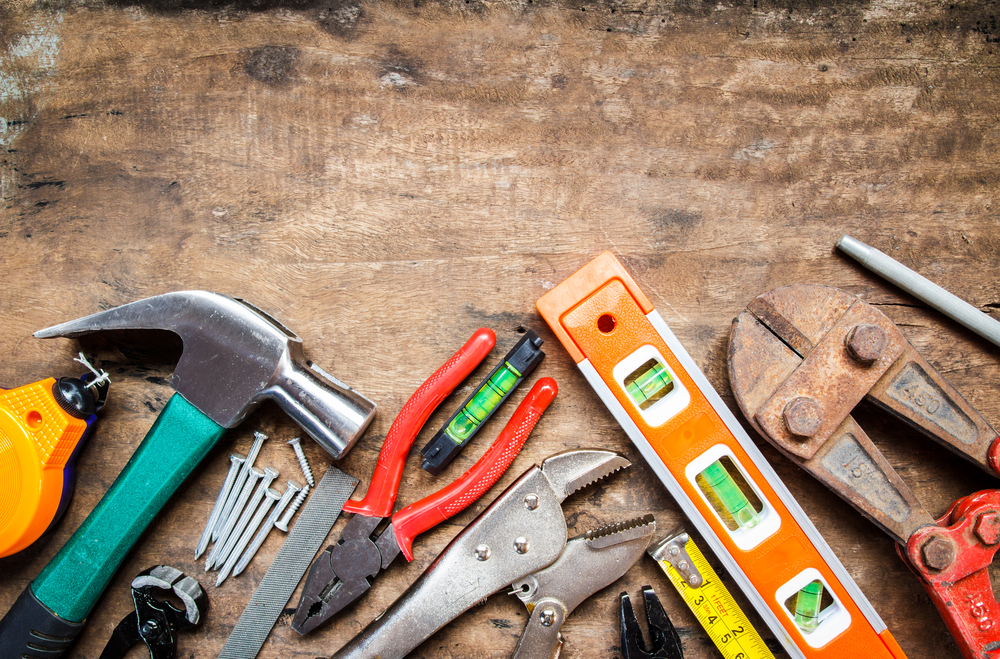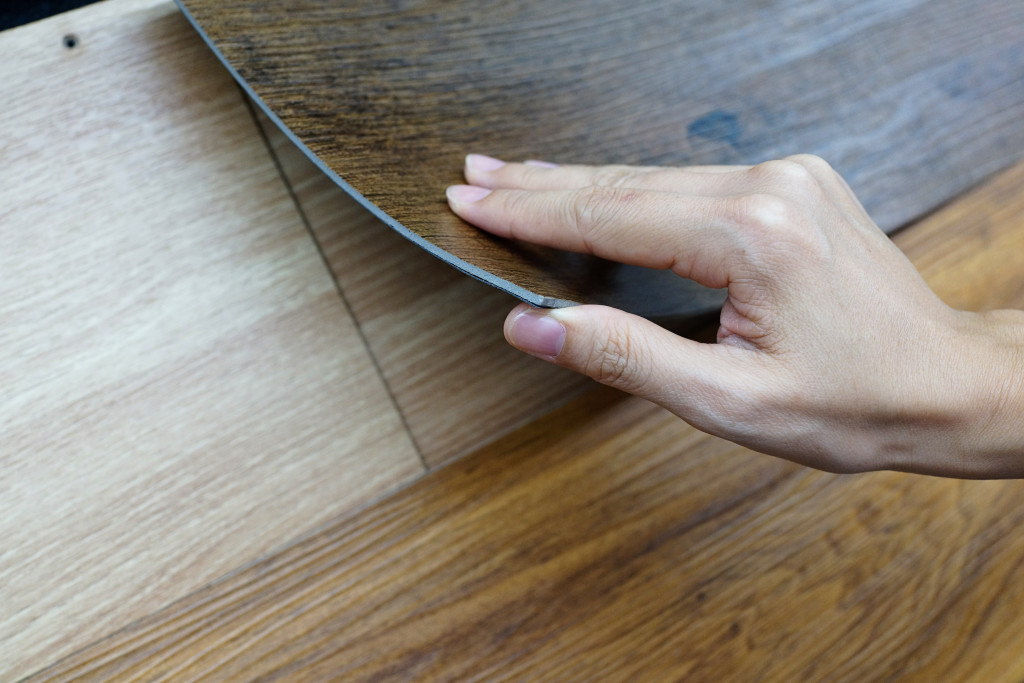Vinyl Flooring Installation: PRO or DIY?
Deciding you want to upgrade your floors is easy, but picking which type of flooring is right for your home can be more complicated. If you go with vinyl flooring, however, you can rest assured you’ve made a smart choice. Vinyl is very durable, so it’s great for busy homes with heavy foot traffic. It’s also easy to keep clean and maintain. In addition, its water-resistance makes it an excellent match for just about any room in the house, including kitchens, bathrooms, and laundry rooms. It’s also comfortable to walk on and doesn’t get icy cold in the winter.
One of the biggest advantages of vinyl flooring is the inexpensive cost. It’s much more affordable compared to premium flooring choices, so you’ll save big by choosing vinyl for your home. If you want to save even more money, you can consider installing your new vinyl floors on your own rather than hiring professionals to get the job done. Not sure if you’re up to the task? Here’s everything you need to know to decide whether pro or DIY installation is the right fit for you.
Measure the Space
If you’re planning to install vinyl flooring on your own, you’ll need to make sure you measure your space properly. Calculate the total floor space by multiplying the length by the width in feet. You may need to break the room up into sections if the space is not perfectly rectangular.
Use the total square footage to determine how many vinyl tiles or planks you need. Some homeowners like to order a bit extra to accommodate for potential mistakes along the way. If you need to make cuts, having some extra tiles or planks on hand will allow you some room for error.
Do You Know What Tools to Use?
Unlike some other types of flooring, vinyl doesn’t require many specialized tools. Most of the items you’ll need to get the job done are either already in your garage or available for an affordable price from the local home improvement store. The following are the essential tools for DIY vinyl flooring installation:
- Tape measure
- Carpenter’s square
- Utility knife (preferably with an angled blade)
- Adhesive (except when using glue-less or peel-and-stick vinyl products)
- Floor roller (consider renting one to save money).
Do You Know What Type of Underlayment to Use?
Not all types of vinyl flooring require underlayment; in fact, most vinyl floors are designed to lay directly on the subfloor as long as it’s level. The manufacturer instructions will indicate whether you need a certain type of underlayment. Be sure to follow the instructions, as failing to do so may void your warranty.
If you do need an underlayment for your vinyl flooring, be sure to choose one that’s made to be used with vinyl. Including an underlayment can be beneficial when you want to increase the height of your floor or add a bit more cushion to your flooring for comfort. However, you should only consider underlayment when working with vinyl that’s at least 4 millimeters thick.
Select types of vinyl, including some wood plastic composite (WPC) vinyl plank flooring, come with an attached underlayment. This added layer is typically made of cork and will help with cushion and sound reduction. Because the underlayment is already attached, it’s much easier to install on your own compared to a separate underlayment.
Do You Know What Thickness to Buy?
When you start shopping for vinyl flooring, you’ll discover that there is a wide range of thickness options available. Most vinyl tiles and planks fall somewhere between 2 millimeters and 8 millimeters thick. Generally, thicker floors are sturdier, so you’ll want to choose a thick vinyl for high-traffic areas such as kitchens and hallways. For a low-traffic area of the home, such as a bedroom, you can use a thinner vinyl option.
You’ll also want to consider thickness in terms of support for your flooring. Thinner vinyl floors should not be used when the subfloor is unstable in anyway, such as with a thin, creaking hardwood floor. Choosing a thicker vinyl is the best option if your current subfloor isn’t particularly supportive.
While thicker vinyl does offer added support, don’t assume it’s also more durable than a thinner variety. Pay attention to the thickness of the wear layer on top of the vinyl tile. A thicker wear layer will hold up better over the long haul than one with a thin layer that will wear away faster.
Consider the Various Installation Methods
Vinyl can be installed in a number of different ways. It’s always best to use the vinyl flooring installation method the manufacturer recommends. Before picking out which vinyl you want, it’s helpful to understand how each method is applied:
- Floating: No adhesive is used with this installation method. The vinyl is installed over existing floors. Many varieties have an interlocking system that snaps the planks together as you go.
- Full spread: This method involves applying an adhesive over the entire floor before putting the vinyl into place.
- Peel and stick: Simply peel off the layer on the back of each vinyl plank to reveal the adhesive before putting it in place.
- Glue down: Apply an adhesive to the back of each vinyl plank before laying it down.
- Loose lay: The backing of the vinyl planks creates friction that keeps the flooring in place, so no adhesives are necessary.
The most popular options for DIY vinyl floor installation are the peel-and-stick method and the interlocking floating method. Both installation methods are quick, mess-free, and easy for homeowners to complete without the assistance of professionals.
If you love a good DIY project, vinyl flooring is an excellent choice for your home. It is considered one of the best flooring options for do-it-yourself installation, and you don’t need to be particularly handy to get the job done right. If you prefer to have pros complete the installation, the good news is that it shouldn’t involve sky-high labor costs because of the quick and relatively easy installation.
Resources:
https://learning-center.builddirect.com/flooring/install-vinyl-plank-flooring/
https://learning-center.builddirect.com/flooring/vinyl-flooring-tools-accessories/
https://www.dummies.com/home-garden/flooring/how-much-vinyl-flooring-do-you-need/
https://www.bestlaminate.com/blog/underlayment-vinyl-plank-flooring/
https://www.bestlaminate.com/blog/buy-vinyl-flooring/
https://servicewhale.com/costs/vinyl-flooring-installation-methods









Derek McDoogle
I did not that vinyl floors had different thickness types. My brother told me that he would like to remodel his house so he can sell it and buy a bigger one. I will recommend him to check vinyl floors since they seem to be a great option.